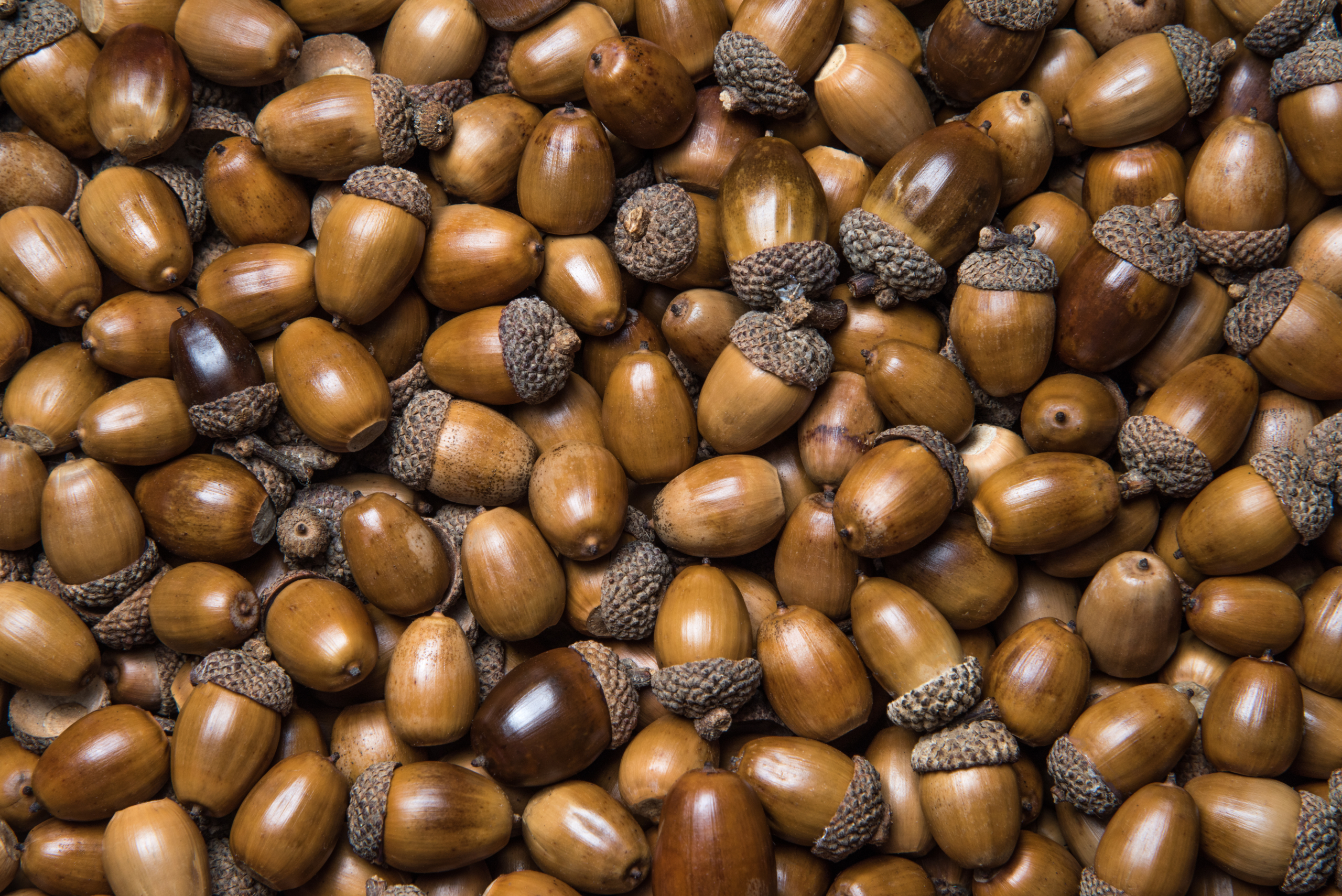We are well into fall, and the ground is covered with acorns. If you think there are a lot more this year than in the past, you might be right: it’s what botanists call a “mast year,” at least in some parts of the United States.
First the botany, then the language. The fruits, nuts, berries, buds, and so on produced by trees and bushes are called “mast.” “Hard mast” includes walnuts, pecans, hickory nuts, hard seeds, and acorns. “Soft mast” includes berries, fruits, buds, and even rose hips.
Oak trees have cycles beyond the growing of leaves in the spring and the dropping of leaves and acorns in the fall. Every few years, they have what farmers might call a “bumper crop,” but which botanists call a “mast year.” Why this happens is not clear. Emily Moran, an assistant professor of environmental science, writes at The Conversation that one factor might be those predators that eat the acorns and other “mast.” In lean years, with not enough acorns to go around, the population of such animals diminishes. But in a “mast year,” Moran writes, “if trees coordinate their seed production, these seed-eating animals are likely to get full long before they eat all the seeds produced in a mast year, leaving the rest to sprout.” With fewer animals, more acorns survive. In addition, all those extra acorns can be, pardon the expression, squirreled away, leaving new oaks to sprout even in a lean year.
ICYMI: Why CNN should rethink sassy chyrons
Temperature and moisture are probably factors in the cycle, and oaks might even communicate with one another, sending chemical signals that “it’s acorn time” so they can coordinate their production. “Mast years” occur in irregular cycles of two to five years. An abundance of acorns is often said to augur a bad winter, the theory being that the squirrels know somehow that they need to stock up. The Farmers’ Almanac explored that hypothesis, and, to judge by the answers, it’s a bad winter every year.
Now, to the language. Plant “mast” is unrelated to the word for the tall pole holding up the sails on a ship, though they are both quite old. (Another “mast” is a type of Middle Eastern yogurt.) The ship “mast” is from early Old English, possibly derived from an even older Latin word for “club.” Our acorn “mast,” though also from Old English, comes from words meaning “fat,” the Oxford English Dictionary says, or “food,” according to Merriam-Webster. Its etymology is related to the same origins that gave us “meat,” which is probably why we call the insides of walnuts or other nuts “the meat.”
In some old languages, “acorn” and plant “mast” were “cognates,” or related. And “acorn” is also related to plain old “corn,” both being small, hard particles, at least until sweet corn came along.
With that out of the way, why is it called a “bumper crop”?
M-W says, “Among the earliest of the word’s many senses, dating from the middle of the 17th century, is ‘a brimming cup or glass.’ ” The OED goes back further, citing a mid-sixteenth-century adjective, “bumping,” that means “huge,” with a wonderfully visual early-seventeenth-century citation: “Never to see you more, unlesse to greet Your bumping buttocks with revengeful feet.” The colloquial use of “bumping” was used “esp. (of a drinking vessel) filled to the brim,” the OED says. So think of the “bumper crop” of a “mast year” as a forest floor filled to the brim.
We can make a different connection, however tenuous, among “mast,” “oak,” and “acorn.” Old German playing cards used to have a suit that depicted acorns. German for acorn is Eicheln. In some regional English dialects, one suit was called “oaks,” the OED says, probably related to its German word, Eiche. But instead of acorns, that suit was clubs. And, as we learned what seems to be hours ago, the “mast” that holds up a ship’s sails may come from a word meaning club.
Eerie, huh?
ICYMI: Our campaign to ban 7 words/phrases abused by journalists
Merrill Perlman managed copy desks across the newsroom at the New York Times, where she worked for twenty-five years. Follow her on Twitter at @meperl.

